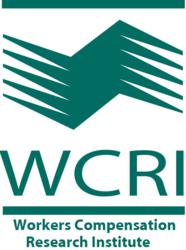WC Reforms Examined
Medical Cost Drivers, Trends Examined

“Fee schedule increases in Texas following Medicare updates as required under House Bill 7 and the 2011 ban on informal networks drove an increase in prices fueling the recent growth in medical payments,” explains a new study. “A decrease in utilization of nonhospital care slightly offset the increases in prices.”
 Texas is one of the states studied in a variety of new reports from the Workers Compensation Research Institute. The 14th edition of CompScope Medical Benchmarks provides a baseline of medical costs and trends and documents how medical payments per claim and their cost components compare with other states. It looks at medical prices, payments, and utilization by provider type and service group.
Texas is one of the states studied in a variety of new reports from the Workers Compensation Research Institute. The 14th edition of CompScope Medical Benchmarks provides a baseline of medical costs and trends and documents how medical payments per claim and their cost components compare with other states. It looks at medical prices, payments, and utilization by provider type and service group.
“The reports are designed to help policymakers and others benchmark the performance of state systems in providing medical care for injured workers,” said Ramona Tanabe, WCRI’s deputy director and counsel. “The reports also provide an excellent baseline for tracking the effectiveness of policy changes and identifying important trends.”
In the case of Texas, the study looked at the impact on metrics of medical costs and care from recent reforms, especially H.B. 7 in 2005. “H.B. 7 impacted both prices and utilization of medical care as the various provisions were implemented beginning in 2005,” the report says. “With few exceptions, the data we report likely reflect nearly all of the effects of H.B. 7 provisions, including certified medical networks and the required use of treatment guidelines.”
For 2011 injuries in Texas evaluated as of 2012, the report said medical payments per claim increased nearly 8 percent, which it said was a faster growth rate than in previous years and faster than in most study states. The report blames price increases related to fee schedule increases based on H.B. 7. However, medical payments per claim were still lower than the typical study state.
Before reforms in 2001 and 2005, medical payments per claim in Texas were the highest of the study states. More recently, payments for nonhospital care were typical while payments for hospital outpatient and inpatient care were lower than the state study median.
At the same time, there was a large decrease in utilization of nonhospital care due to the mandatory use of treatment guidelines and utilization review, the introduction of certified networks, preauthorization for physical and occupational therapy services, and an increased payer focus on utilization. There was also a decrease in utilization for physicians and chiropractors; however, Texas was still higher than typical for things such as chiropractic use and neurological/neuromuscular testing.
Key findings for other states included:
- Medical payments per claim in Indiana were 17 percent higher than the 16-state median due mainly to higher prices and inpatient payments.
- The average medical payment per claim in Louisiana was higher than the 16-state median, largely the result of much higher hospital outpatient payments per claim, which also contributed to the rapid growth rate.










